Deja Vu – A Plane Spotting Challenge by John Madden
Catch up on the previous reports from this challenge:
Introduction
Trip Report #1
Trip Report #2
Trip Report #3
Trip Report #4
Trip Report #5
Trip Report #6
Trip Report #7
Trip Report #8
* Trip Report #9
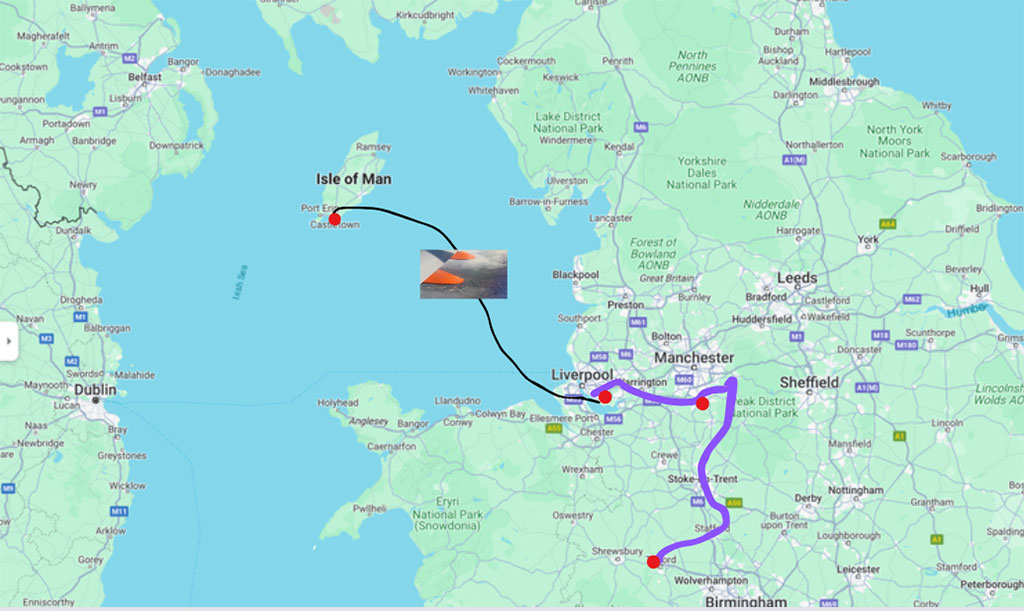
When I first came up with my spotting Challenge back in 2020, I sketched out a tentative 5-year global travel itinerary that would enable me to fulfill the dream of spotting almost 800 individual aircraft types capable of carrying 9 passengers or more. Three years on the list of types required continues to diminish at a healthy rate, but the yet to be spotted aircraft do feel as if they are hanging around my neck like a lead, or perhaps more fittingly, an aluminum weight.
“You’ve got to get down Eagle”
Whenever I am struggling to complete a task, I look for inspiration from those few words of encouragement given to Neil Armstrong by the Apollo 11 Control Room back in 1969. Now is the time for me to be laser focused and bring home the remaining cohort of aircraft, including the two disappointing “no shows” from my last spotting trip to Canada/USA in May this year.
During this Challenge I have been guilty of leaving too long a gap between spotting trips, and if I am not careful 2023 would tip toe unnoticed in to 2024 and another half a year would have passed without crossing off any new aircraft types. In the absence of an overseas spotting tour on the horizon until Spring 2024, I thought it expedient to squeeze in a few small domestic trips in an attempt to sweep up any remaining aircraft that are on display in various aviation collections around the United Kingdom. The majority of my previous trips have been in search of aircraft types often only now found overseas, but on home soil hidden in plain sight are numerous types from an era long gone when famous names such as de Havilland, Vickers, Bristol and Short once designed and built passenger aircraft.
A town called Merville and a Napoleon era gun battery on the Humber estuary
As is customary, before moving on to my latest spotting trip I must share with you the small number of aircraft types that I managed to remove from the Challenge list since visiting Canada and USA in May. With the list now made up of types almost exclusively first flown before the new Millennium, it is not surprising that despite now working at Heathrow, the United Kingdom’s busiest airport failed to yield a single new type. However, the airport did allow me to witness a unique moment in aviation history; the departure of Virgin Atlantic Boeing 787 G-VDIA at 11:50 am on Tuesday 27th November bound for New York marking the first transatlantic flight by a commercial airliner fully powered by sustainable jet fuel.
Thankfully I did manage to spot several new types during my latest spotting trip interlude. Firstly, a chance encounter with an iconic airliner parked in a field in north west France, and secondly whilst on a family visit to Lincoln in October, the sole surviving complete example of a former Royal Air Force Transport Command behemoth.
My wife had entered a Triathlon not too far from Ypres in southern Belgium, and with it taking place over the August Bank Holiday weekend, we decided to drive there. It was politely pointed out to me that I should not plan any spotting “diversions” during the trip so I dutifully left the route planning to my wife as the itinerary also included a WW1 Commonwealth War Graves cemetery to visit her great uncle’s grave. Having left the cemetery, my wife took the wheel and in a moment of reflection we headed north across the flat open Flanders countryside towards the Belgian border. After 30 minutes I thought I had seen a mirage on the horizon, no aeronautical pun intended. It wasn’t a mirage; it was indeed an Air Traffic Control Tower.
I didn’t break the silence, held my excitement back and hoped that the road just maybe, without any meddling on my behalf, inadvertently deliver us to a ramp blessed with an assemblage of French registered light aircraft. Low and behold, the road headed straight for the airport, dutifully skimmed the perimeter fence and revealed what could only be the tail of Air Inter Vickers Viscount 724 F-BMCF. I broke the silence, and in my finest diplomatic manner asked my wife if she would kindly turn the car around so that we could find a vantage point to better see this magnificent aircraft.
Not only did we find that spot, but also a former Air France Boeing 727-228 and an Air Inter Caravelle 12. All 3 aircraft belong to the resident Aeronautical Training School and despite their respective ages, are complete without any items removed. Only a dozen of this stretched and re-engined variant of the Caravelle were ever built and it is an aircraft type that I thought would have to wait for a future visit to Le Bourget. My wife begrudgingly conceded that the moment was quite interesting, perhaps she will hear the calling yet!
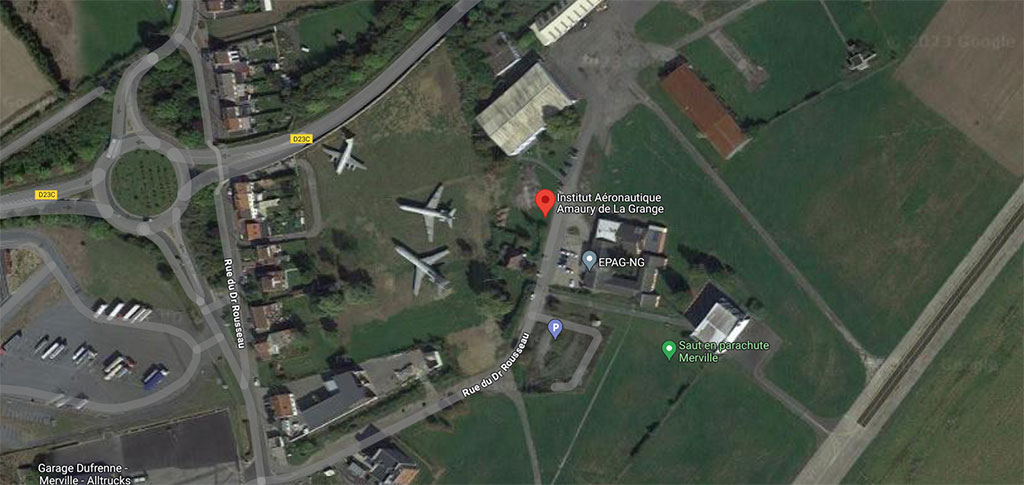
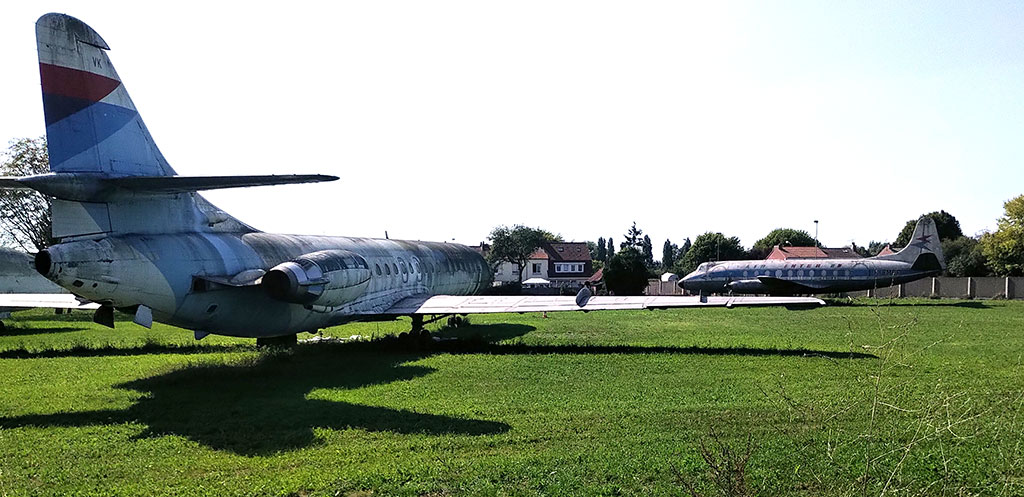
The next new type to be spotted was a deliberate act of premeditated plane spotting. Disturbing news had been circulating all year regarding the fate of the Blackburn Beverley C.1 located at the now permanently closed Fort Paull Military Museum just east of Hull. The owners of the Beverley had been given an ultimatum to move the aircraft from the site by the end of 2023, and with time running out I feared the worst that the aircraft would be scrapped and my chance of seeing the last remaining complete example of this aircraft type would vanish forever.
Back in the mid 1980s I used to live not far from Southend and the sheer size of the resident Beverley never ceased to amaze me every time I visited the airport. We know what became of this particular aircraft, so engineering a visit to Hull before the end of the year was a genuine priority. Thankfully my wife had already arranged a weekend stay with her mother in Lincoln, so a several hours “aviation related absence” would not prove too difficult to engineer during our stay.
I chose to drive to Hull early on the Sunday morning and left the house faced with a 50-mile journey shrouded in mist, so dense in parts that I could not see the surface of the water when I passed over the mile long Humber Bridge. The museum is located within the walls of Fort Paull, a gun battery built in the early 1800s to defend the Humber Estuary from invasion by the French. Thankfully the mist around Fort Paull was not too bad and I did manage to spot the Beverley.
The site is now permanently closed and I had gambled that the aircraft would still be visible from the approach road to the museum. The Beverley is a big beast and there she stood behind the Fort walls with her distinctive flight deck peering over the ramparts, reminiscent of a giraffe in a zoo enclosure. Conditions were not conducive to photography but the image of this forlorn looking aircraft will be etched on my mind until I hang up my log book. I do so hope that the owners find a new home for this magnificent aircraft before it is too late.
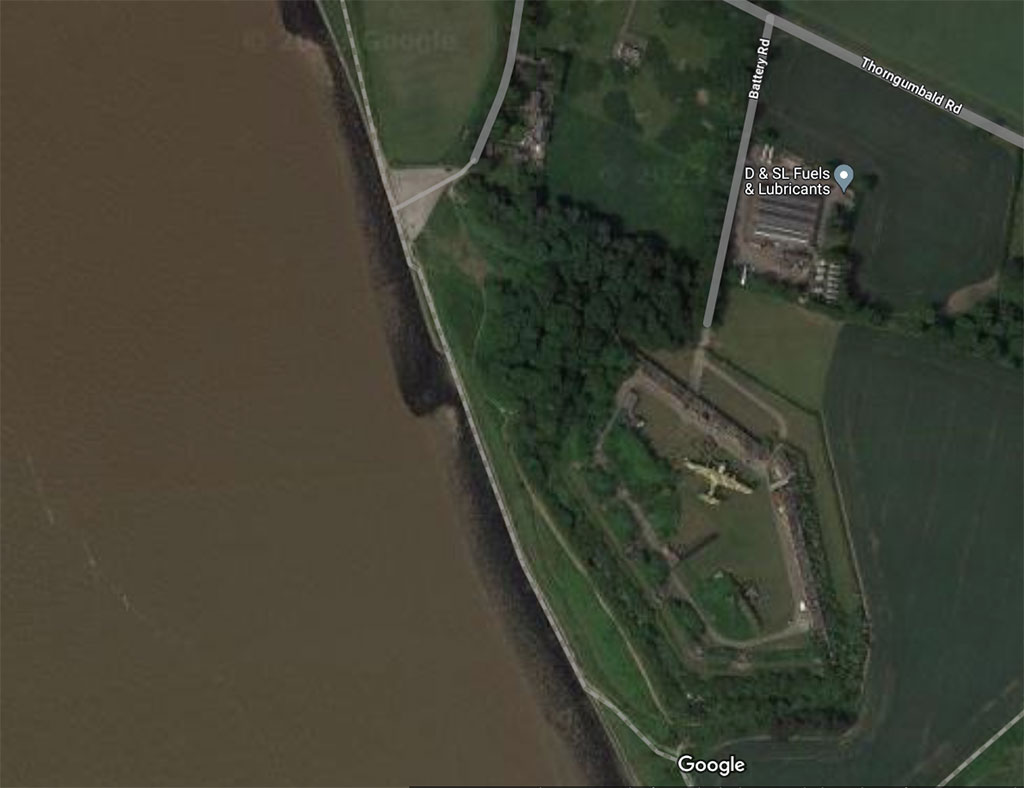
The journey home to Ascot later that day included a small detour via Coventry Airport to spot another aircraft that I had been keeping for that proverbial rainy day. Also looking worse for wear was Bae ATP SE-LPU, formerly of West Atlantic and currently used by the airport fire services for training purposes. The aircraft can be easily photographed by parking up on a piece of wasteland at the end of Rowley Road which conveniently passes the western perimeter of the East Midlands Aviation Museum. I had forgotten about the resident ELAN Cargo Argosy G-APRL at the museum and this was a most fortuitous type spot too as it’s twin booms were visible from the road.
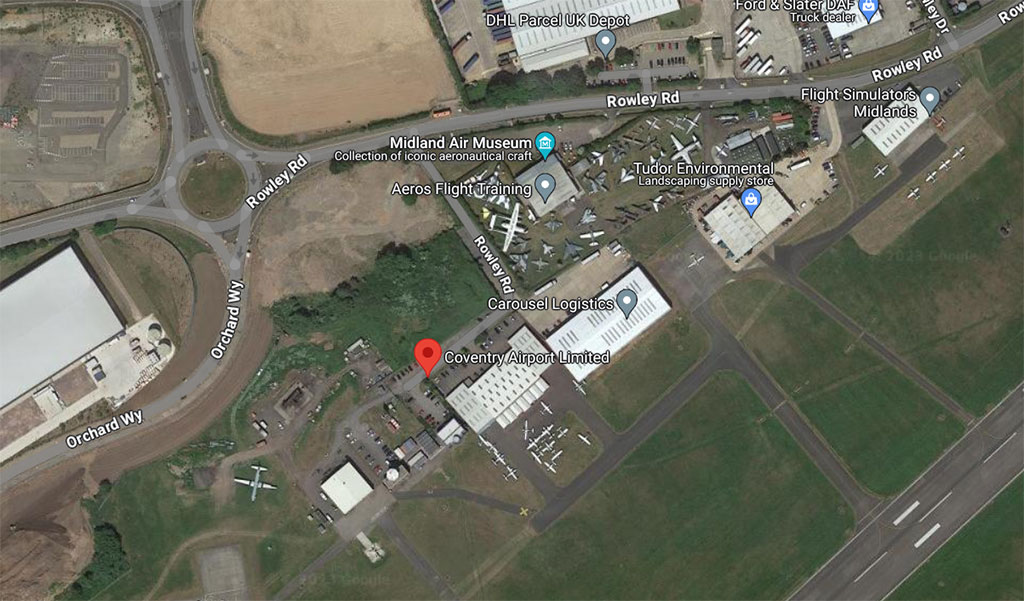
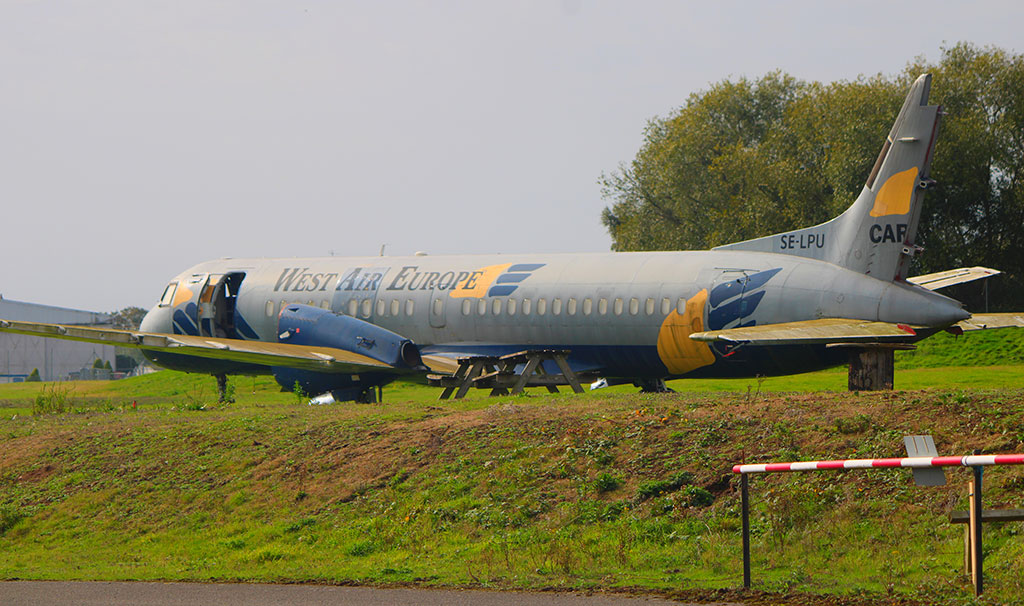
I was fortunate enough to fly on several British Airways operated ATPs out of Manchester during the early 1990s, and recall that the type did feel and look rather evolutionary when compared to the many new designs entering the market at the time such as the ATR 72. Not a bad day’s spotting for a miserable October Sunday, three aircraft dutifully removed from the list. And to add icing on the cake, a Spitfire and Hurricane duo flew low over us whilst we were having lunch at the Dambusters Inn before we departed Lincolnshire.
The cruel laws of plane spotting physics
The brutal disappointment of not seeing a Royal Air Embraer Bandeirante in Detroit during my last spotting trip had only magnified my intent to strike this aircraft from the list and the opportunity soon availed itself.
Back in August an email dropped into my inbox from a former school friend announcing the date and venue of a proposed school reunion. I confirmed my attendance, and as the venue was in Liverpool, this would allow me to drop into several aviation collections en-route and remove more of those hidden out of sight types still required as part of the Challenge. Then I had one of those magic light bulb moments; just 80 miles north west of Liverpool on the Isle of Man there is an Embraer 110P1 Bandeirante and suddenly all roads lead to the island. Not only is this aircraft not squirrelled away in a hanger, but even better, as there are no roads from the mainland it would necessitate taking a scheduled flight, and where better to fly from but Liverpool Airport, somewhere I haven’t flown from for over 20 years.
My logbook buddy Mr. Jones would also be attending the school reunion, and after a quick phone call he too had booked himself on the 09:40 easyJet flight from Liverpool to Ronaldsway on Friday 17th November. The return flight that evening at 17:20 would allow us plenty of time to change our attire and attend the school reunion later that evening in Liverpool. The Isle of Man is a fitting destination to start this spotting trip, as my first ever flight through Liverpool airport was aboard Saab 340 G-HOPP of Manx Airlines from and to Heathrow back in 1985.
The day’s spotting commenced with a short walk to Liverpool John Lennon Airport from the conveniently located Travelodge on Speke Hall Avenue. A quick delve into Flightradar24 revealed that our steed for this morning’s flight would be Easyjet A320 G-EZOA, currently on the ground at Belfast International Airport preparing to return to Liverpool where several hours earlier it had commenced the first of six flights scheduled for today. Airline departures from Liverpool this morning revealed no less than 21 different aircraft destined for 17 different destinations. To spot this many airline departures at Liverpool airport 50 years ago would have necessitated at least three full days on the viewing terrace, and the number of destinations could have been counted on one hand. The LCCs have most certainly changed the aviation landscape dramatically since my early spotting days in the 1970s and this is clearly evident in Liverpool today.
As chance would have it, the first aircraft spotted having entered Departures was 35-year-old Saab 340 ES-NSM of NyXair, which before moving on to the Estonian register had flown with Loganair as G-GNTF. Further investigation revealed that it had previously served with British Midland between 1996-2001 and it was this information that made me ever so more inquisitive about the aircraft’s history. Cross referencing with my own files revealed that I had in fact flown on this aircraft from Edinburgh to Manchester 23 years ago in February 2000.
Over breakfast we noticed that our easyJet A320 from Belfast had touched down and was hurriedly approaching the terminal, time to finish up and head for the departure gate. Just before we departed Departures PC-24 D-CHMS of Platoon Aviation taxied past on its way to depart for Paris. Both photographs below were taken from one of the many cafes that line the long window looking out onto the ramp.
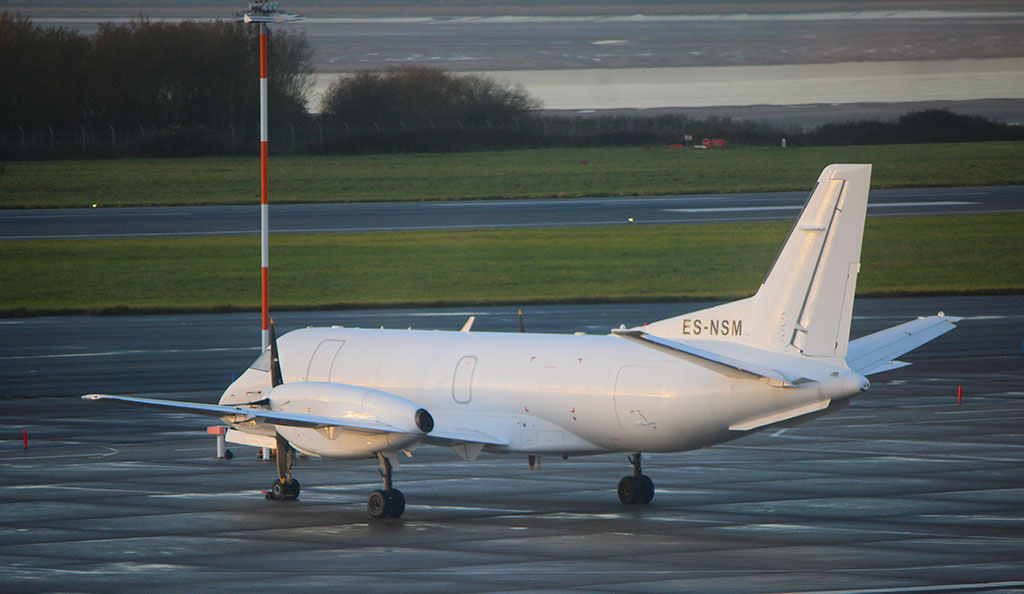
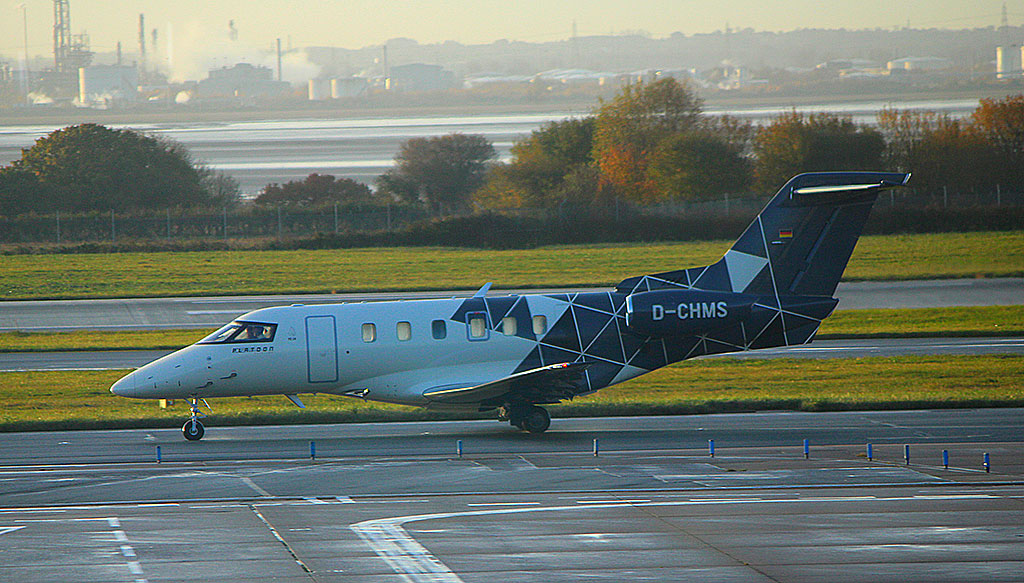
The beauty about plane spotting is that it takes you to places that perhaps would not normally feature on the annual travel list, and the Isle of Man has certainly been one of those places for me. I had viewed the Isle of Man many times from 30,000 feet on previous over flights to and from Belfast but never for a moment thought I would one day visit the island.
Since the launch of the “M” prefix in 2007, the number of Manx registered business owned aircraft now totals over 1000. If for whatever reason all the owners of these business aircraft wished to visit the island on the same day, it would be impossible to accommodate them all at the island’s solitary airport. Also, rather intriguing are plans to possibly build a residential Aeropark on the airport, no doubt with the intention of further swelling the “M” registered business aircraft fleet? The island certainly is an interesting aeronautical conundrum.
Today’s flight was always going to be a fast one as the distance flown between the respective airports is around 85 miles and rotations earlier in the week had indicated that our airborne flight time would be around 21 minutes. With a tail wind and having departed Liverpool straight over the river Mersey it was no surprise that we broke the 20-minute mark recording a total fight time of just 19 minutes and 14 seconds. Maximum altitude achieved during the short flight was 14,000 feet and we commenced our decent into Ronaldsway after just 8 minutes. Our aircraft left the runway before passing the Manx Aviation and Military Museum buildings so the much-anticipated sighting of the Bandeirante would have to wait until leaving the airport. We parked up at gate 6 facing an Embraer 145 and ATR 72 of Loganair.
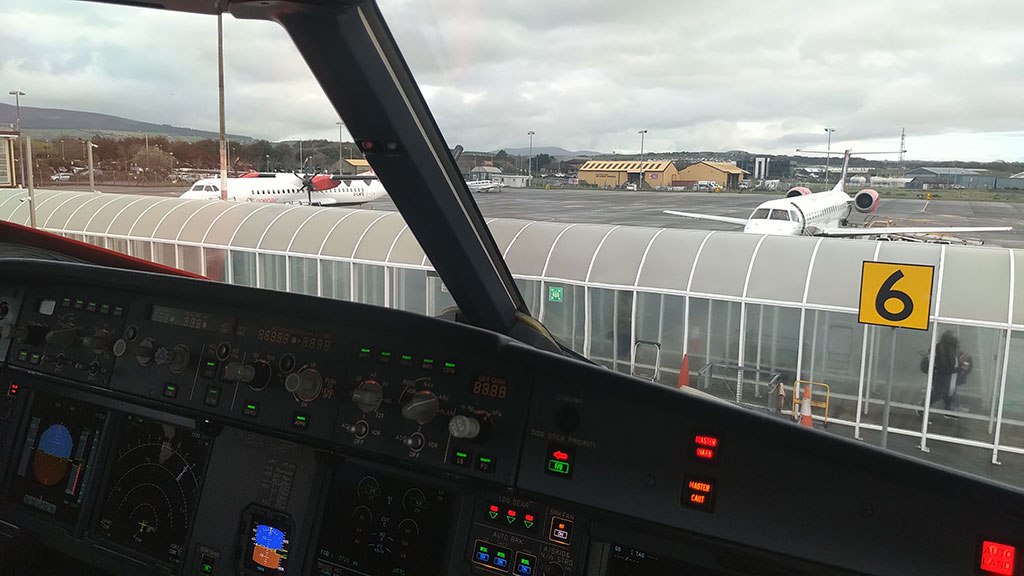
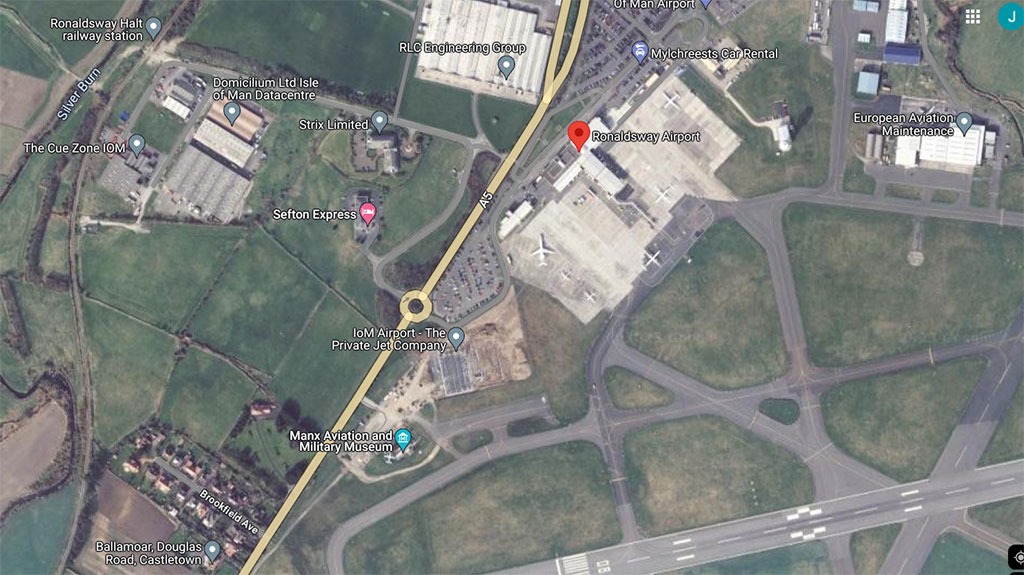
After a very short walk from the terminal to the museum the Bandeirante came in to sight parked adjacent to the recently acquired Bae ATP G-MAUD. The museum is open year-round at weekends and every day from May through September inclusive. Being closed today I had to make do with a photograph taken from the perimeter road, not ideal but I do think the museum “furniture” adds to the overall atmosphere. The Manx ATP is one of 3 of the type found at the airport, SE-MEX and SE-LLO are located quite a distance from the museum and would require a car to go hunt them down for close up photography. Being a former passenger variant with NextJet, SE-MEX is currently used as the main donor of interior parts to restore G-MAUD to her former glory with MANX Airlines. Having not spotted a Bae ATP for many years I manage to record 4 sightings in as many weeks.
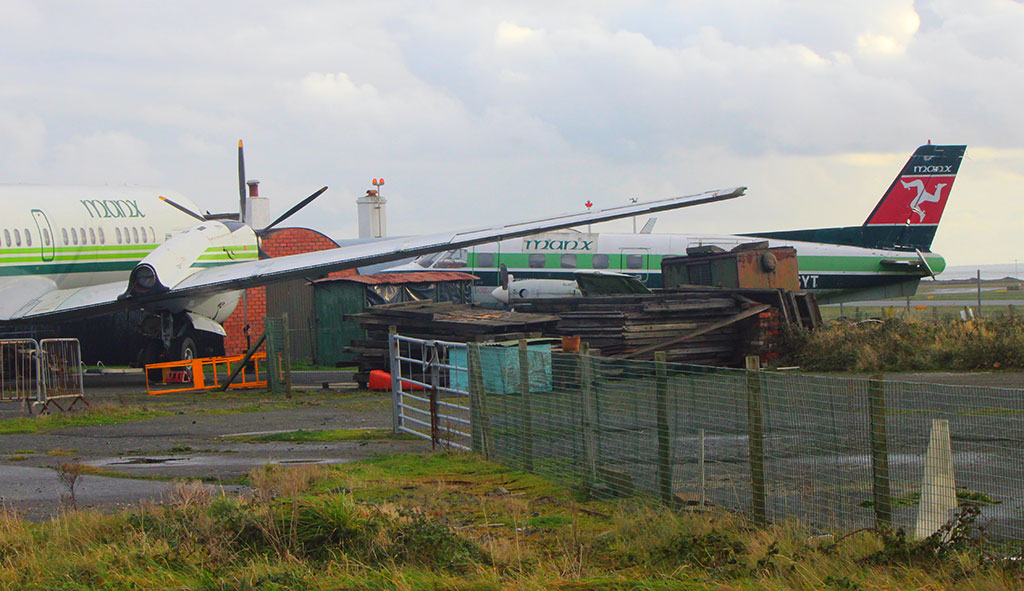
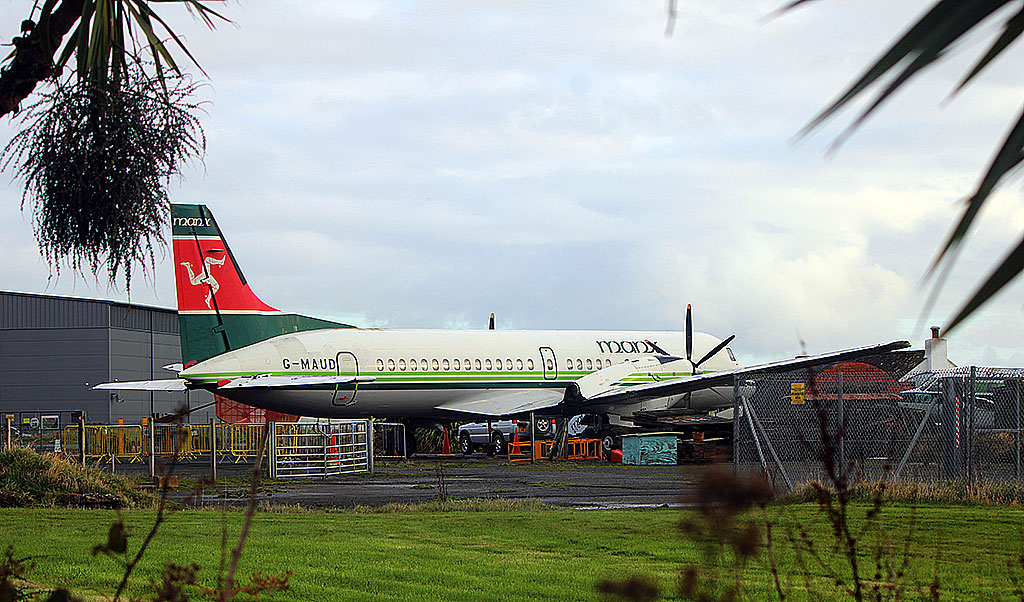
This long-awaited reunion with a Bandeirante had finally been achieved and seeing the aircraft reminded me of just how ubiquitous this type was throughout the United Kingdom regional airport landscape during the 1980s. It really was quite difficult not to spot one of these pioneering commuter aircraft when visiting your local airport. The Air UK winter 1981/82 timetable reveals that the aircraft was used not only within the United Kingdom, but did venture across the English Channel to Rotterdam on a weekday rotation from Gatwick.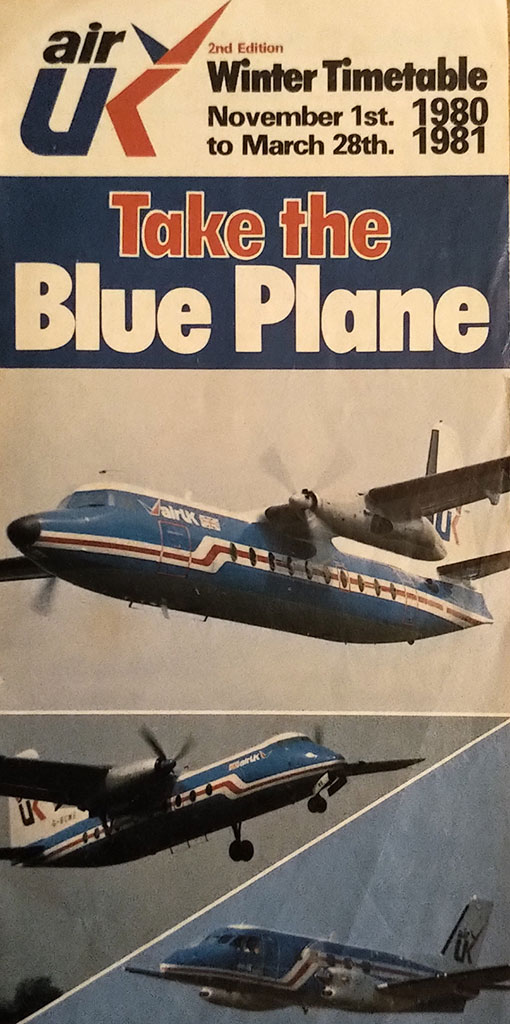
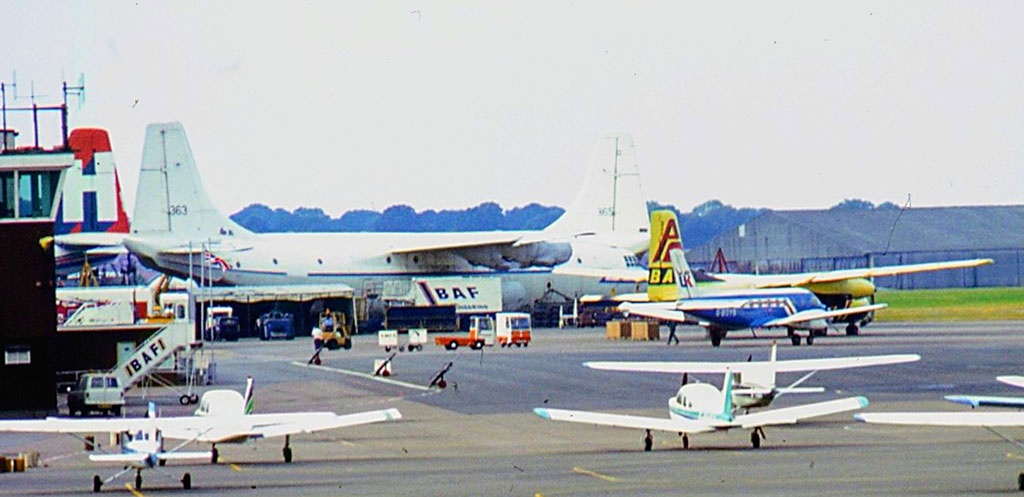
Also, of note in the above photograph taken at Southend airport in 1983 is Handley Page Herald G-ASVO sporting nonstandard British Air Ferries livery, the airline having just taken the aircraft from Guernsey Airlines and adding only BAF titles. The white-tailed Short Belfast registered XR365 became G-HLFT of Heavy Lift Airlines and was the last airworthy example of the type to fly. It is rumoured that the aircraft is currently under restoration in Australia by its new owners ahead of plans to return this giganteum to the skies once again.
After 4 hours spent walking, eating, drinking and purchasing the obligatory Mark Cavendish auto biography, we boarded a bus in Port Erin to return to Ronaldsway. The light had begun to fade when we arrived at the airport but it was sufficient enough to catch Reims Caravan II G-RVLY waiting for its nightly postal run to East Midlands airport. Incidentally, this too was an aircraft type that had evaded me thus far in the Challenge despite regularly noting its presence in the UK skies for the last 2 years or more.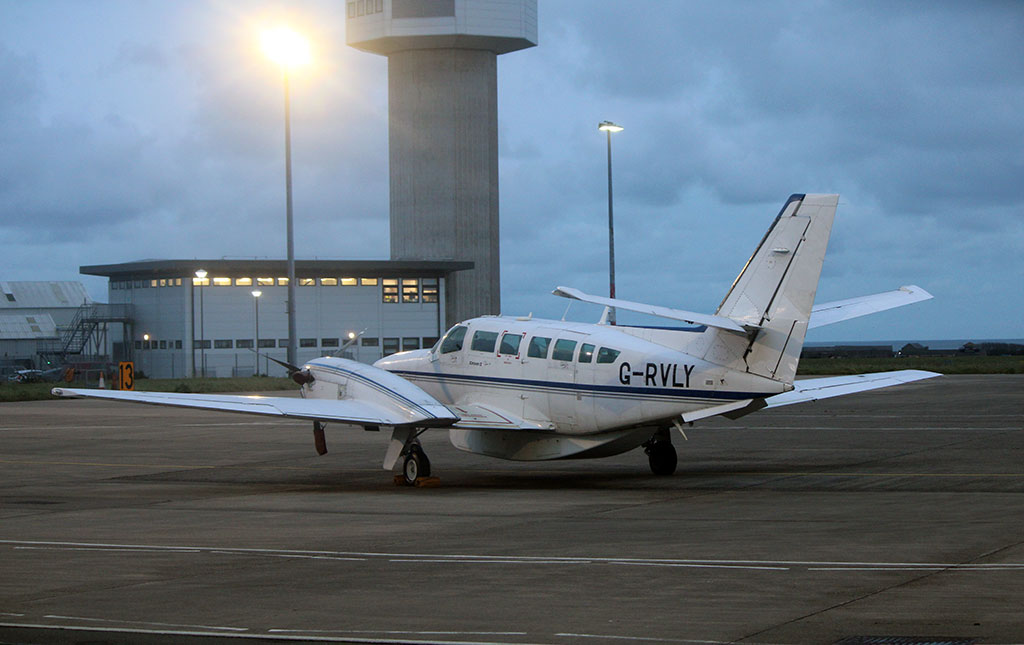
We boarded easyJet A320 G-EZTX for our return flight to Liverpool and bade a fond farewell to the island. Two aircraft types removed from the Challenge list, and finally the Bandeirante had been bagged. One could argue that today’s visit to the Isle of Man was a bit of a trek, but I am more than happy to take small prizes when I can with glee. For the record and probably not unsurprising, we did not see any of the 1,000 plus “M” registered business aircraft during our time at Ronaldsway.
A day full of spotting nostalgia
Saturday’s journey home does have a rather circuitous feel about it. Having said that though, the itinerary kicks off with a brief visit to my spiritual plane spotting home, Liverpool Speke airport. The opportunity to see my fourth HS 748 of the year plus the first of two Bristol Britannia aircraft today could not be missed.
[Plane Spotting at Liverpool Airport]
I do hold many fond memories from the many days spent plane spotting at Speke airport. Those long-ago visits provided many first sightings of aircraft that I am hunting down as part of this Challenge. The airport was also magnanimous in allowing its teenage spotting fraternity access to many of the aircraft that passed through the airport. I never tired of boarding the Cambrian Airways fleet of Viscounts nor the regular visiting Convair C131 Samaritan of the USAF.
One of the many favourite memories I have though is the day when several of us ascended a set of passenger steps that finished short of the forward access door and scrambled aboard Lockheed Super Constellation F-BGNG of Catair. Together with its sister ship F-BRNH these two former Air France aircraft ferried car parts from Saarbrucken on 13 different occasions during 1970 for use at the almost adjacent Ford Motor car manufacturing plant at Halewood. It would be the last time I spotted this wonderful Lockheed type at Speke, as F-BRNH had the honour of performing the final visit by a Constellation to the airport in October that year. And before departing for the journey south, I savour a final nostalgic gaze at the former control tower and in particular the clock face that my father tiled as a 15-year-old apprentice back in 1937.
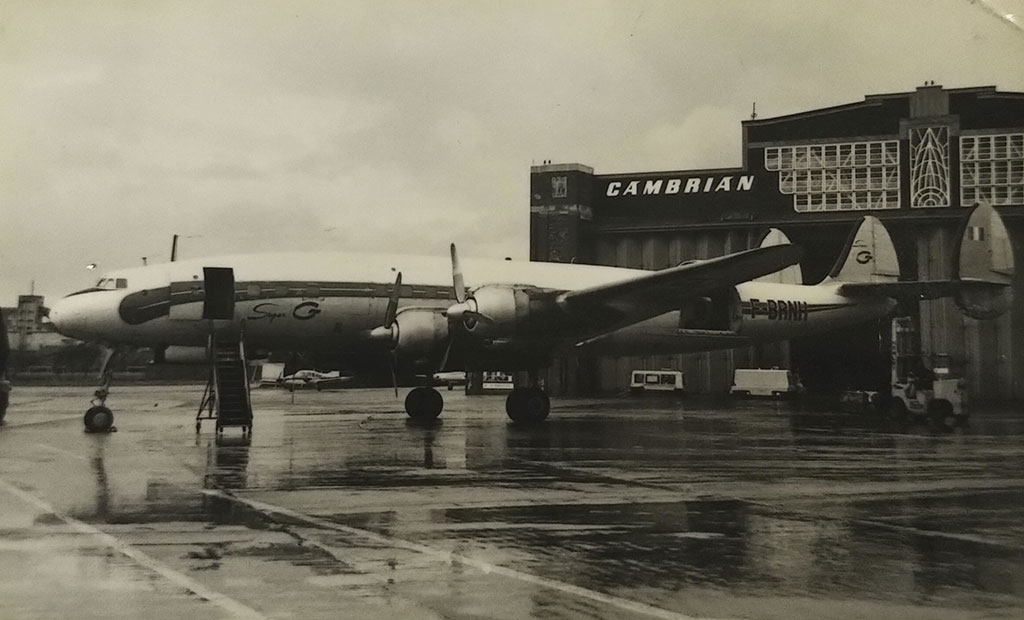
Black & White Connie photo at Speke in 1970 – note passenger steps not actually reaching aircraft door!
Next stop on today’s spotting trip is the Runway Visitor Park at Manchester airport. The Visitor Park offers tremendous views across both runways and many of you will know that is a great location to spot both landing and departing aircraft. The reason for my visit today is to spot 2 much needed aircraft types; BAe Avro RJX G-IRJX and British European Airways Hawker Siddeley Trident 3B G-AWZK. And it goes without saying, it would be remiss of me not to have a quick look at the resident British Airways Concorde, an aircraft whose mystique and magic never wanes for me.
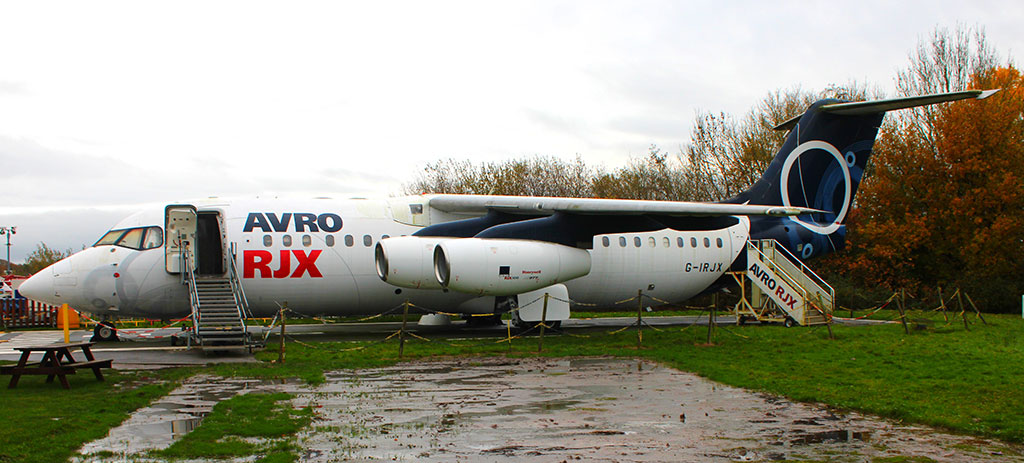
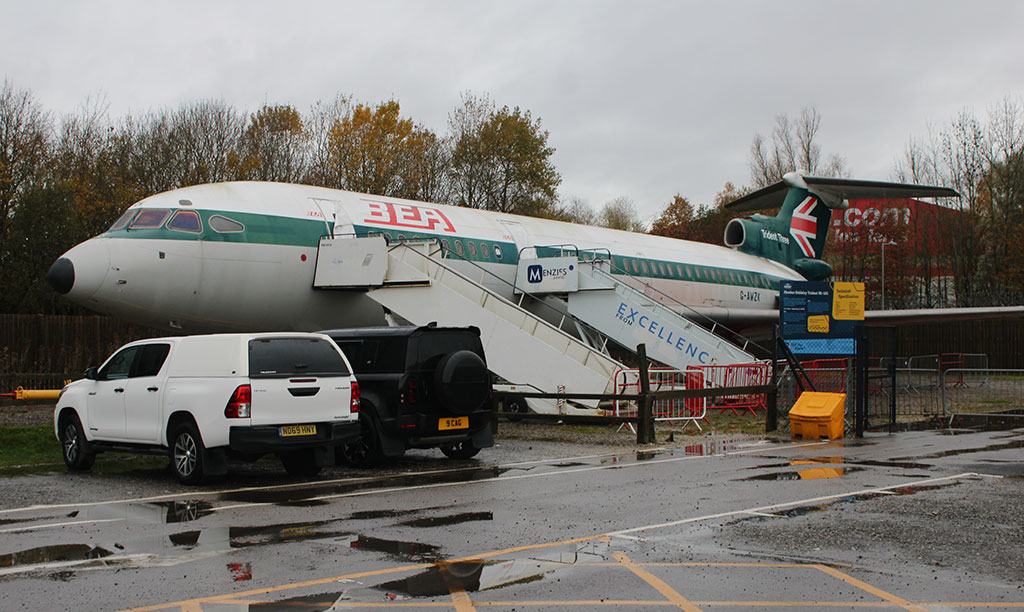
I have spotted and flown on numerous BAe 146/ Avro RJ airliners in the past, but the RJX completely evaded me. Seeing the sole remaining example for the first time is a major milestone as it also qualifies as a “type spot”, most rewarding indeed. The closest, and it was close, that I ever came to flying on a Trident was in October 1985 when I booked a flight from Heathrow to Milan aboard a series 3 variant returning later that day on a British Airways Boeing 757. My manager decided to join me and suggested that we fly out the night before and meet our Italian colleagues for dinner. The flight was rearranged and alas a Boeing 757 was used on that rotation. British Airways flew its last scheduled Trident flight just 2 months later and the opportunity to experience this aircraft was lost forever.
One of my neighbours flew with BEA as a purser during the 1960s/70s and recites numerous fascinating stories that amply illustrate just how fast the series 1 and 2 aircraft types were compared to other contemporary airliners of the time. It is the perfect aircraft, I understand, for arriving ahead of schedule on the home run to Heathrow, especially so when you have a dinner party to attend.
Departing the Runway Visitor Park, I deviated from the route south for a brief breakfast visit to my son who lives in Congleton. After a much-needed cup of tea and slice of toast I resume the spotting trip and head for the RAF Museum in Cosford whose extensive collection will provide several more much-needed types as part of the Challenge.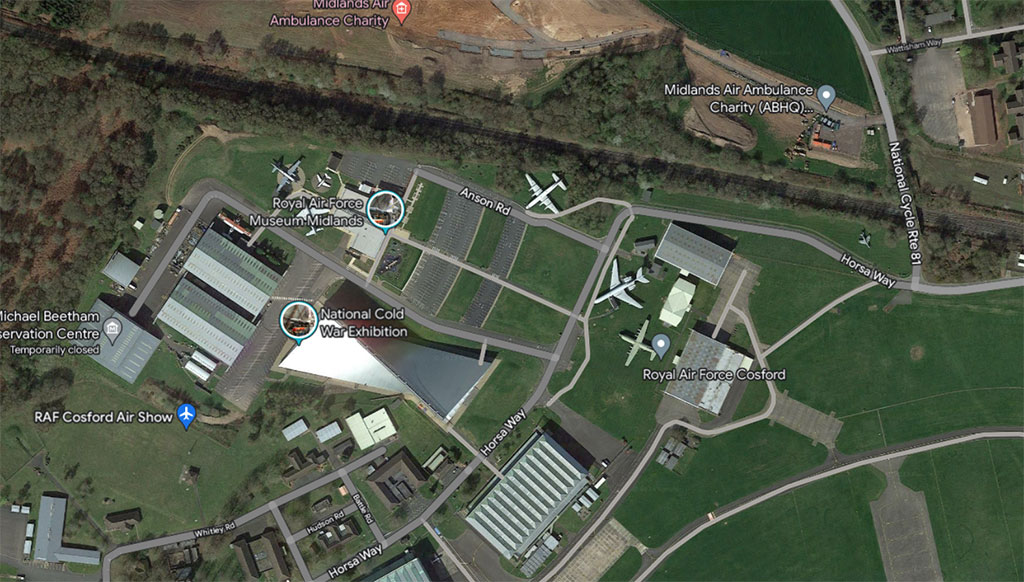
Driving into the visitor car park one is immediately presented with Vickers VC10 C.1K XR808 and former Bristol Britannia 312 G-AOVF which now wears false Royal Air Force Colours and is marked XM497. This is my second Britannia of the day and it stands perfectly positioned for photography on a neatly manicured grassed area in front of a tree line. I last spotted this aircraft at Southend airport in 1983 wearing Invicta International colours, seen below heading up a line of 4 former BAF Heralds and 2 Viscounts.
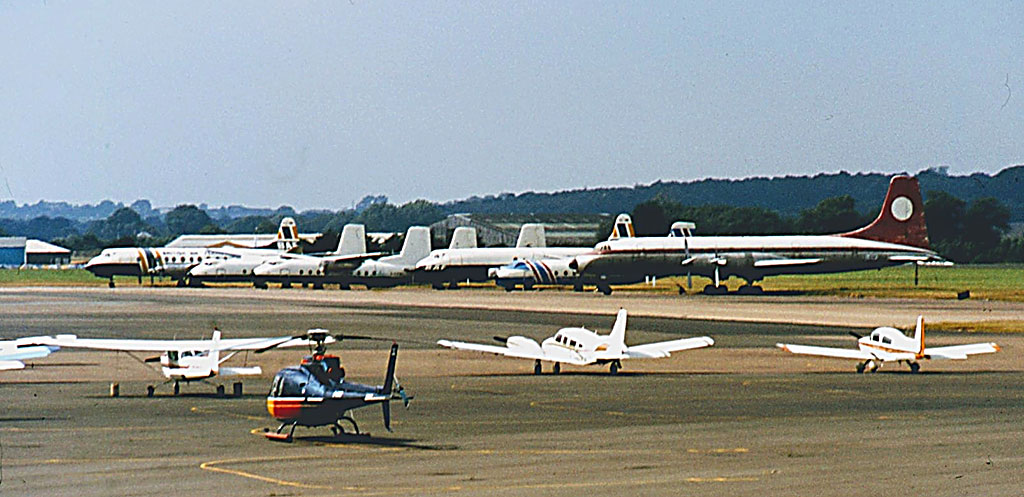
On the Challenge list today for my visit to Cosford were the following aircraft; Short Belfast, HS Andover, Scottish Aviation Twin Pioneer and DH Comet 1XB. We are all well versed with aviation museum choreography, so off I went to hunt down the previous 5 mentioned aircraft. The military aircraft collection is intelligently split between 4 main hangars; Cold War, Test Flight, War in the Air and Transport. For obvious reasons my interest today was largely focused on the Cold War and Transport collections, but I did make time to visit the War in the Air hanger and take in the many iconic aircraft including the magnificently presented ME 262.
The aircraft are relatively well spaced out in all hangars for photography, although do be cheeky when in the Transport hanger and ask one of the museum volunteers if you can briefly use the elevated gantry for panoramic shots. The DH Comet 1XB G-APAS wears false BOAC colours and is also a “type spot” for me as I never did see this variant in RAF service. The aircraft was originally built as a Comet 1 and delivered to Air France in 1953. Following the grounding of all DH Comets the aircraft was returned to De Havilland in 1954 who replaced the ill-fated square windows with strengthened oval versions and it was subsequently delivered to the RAF as a Comet 1XB and fore runner to the later Comet 2 variant.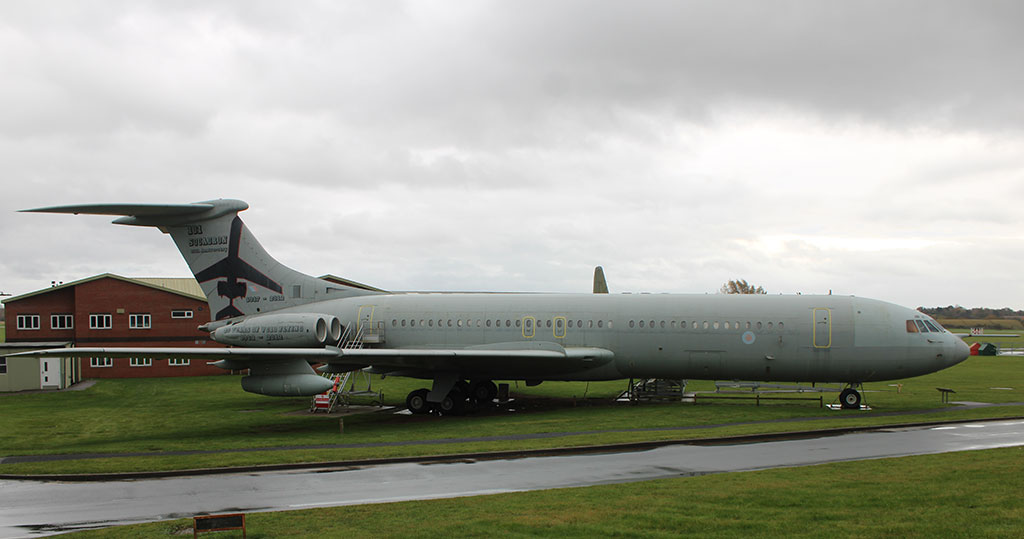
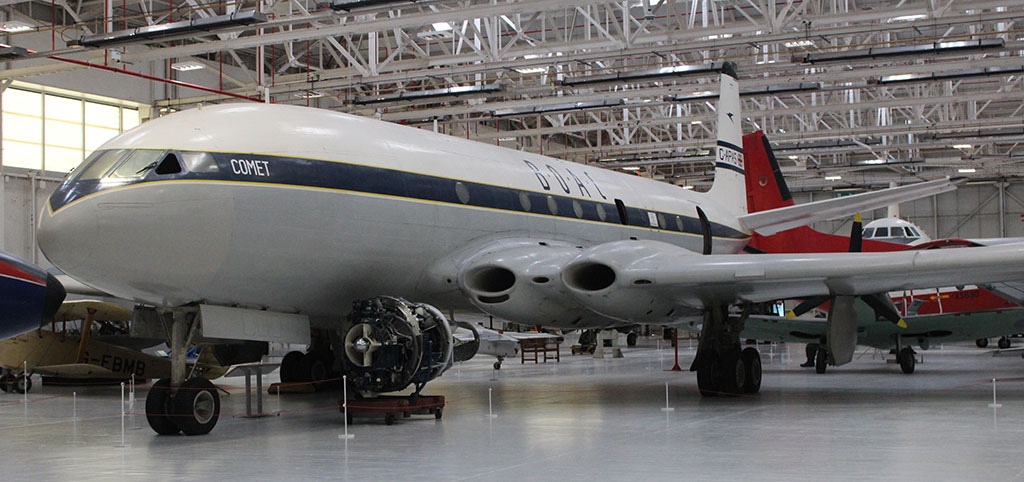
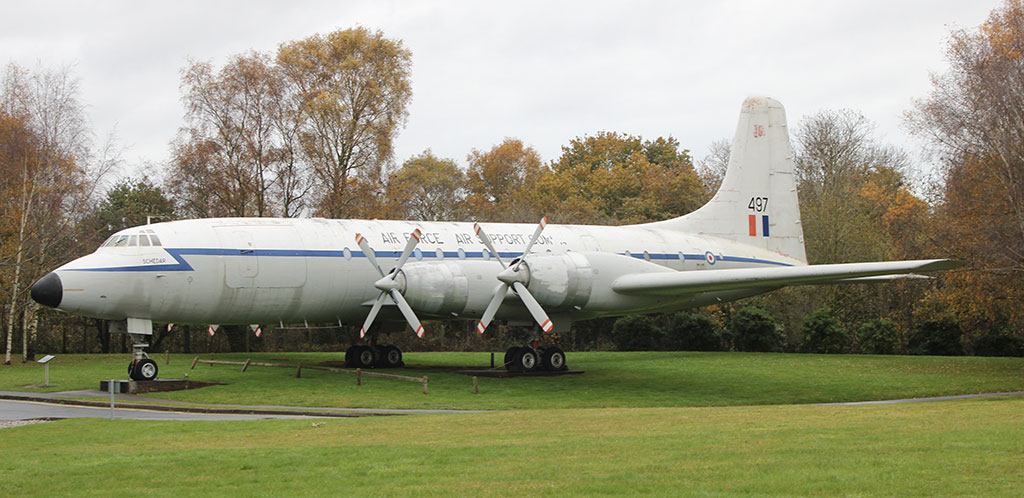
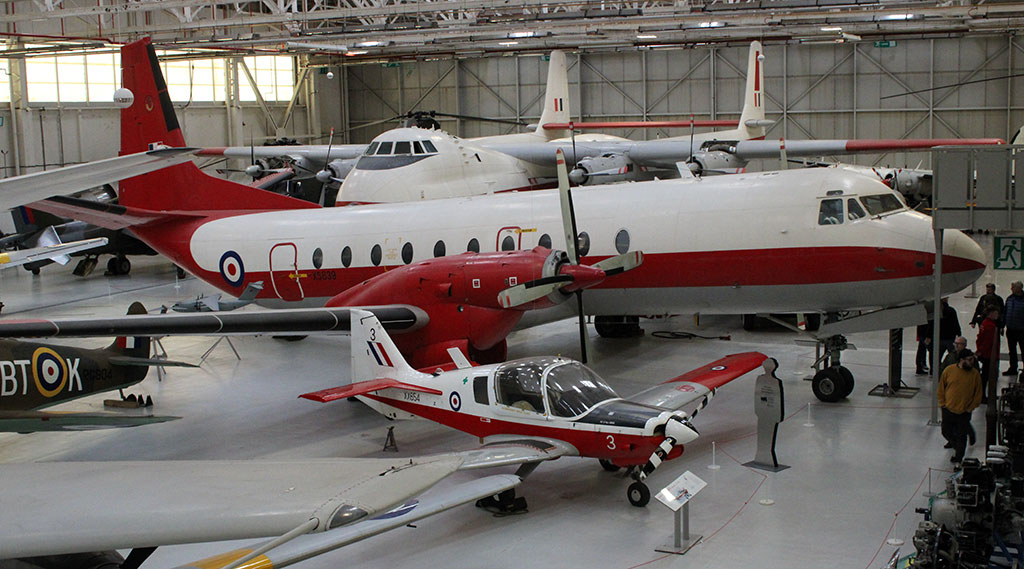
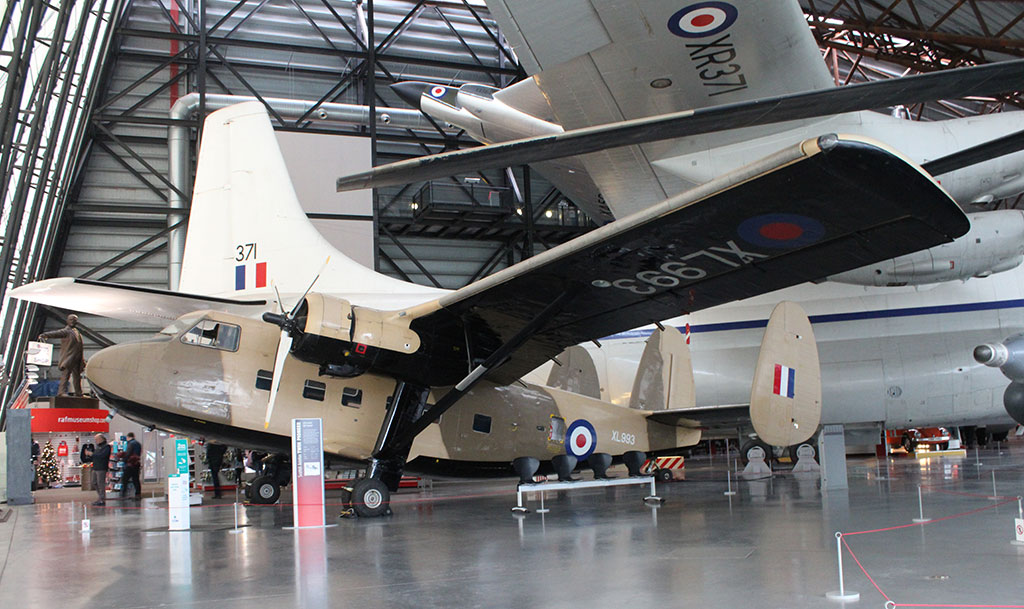
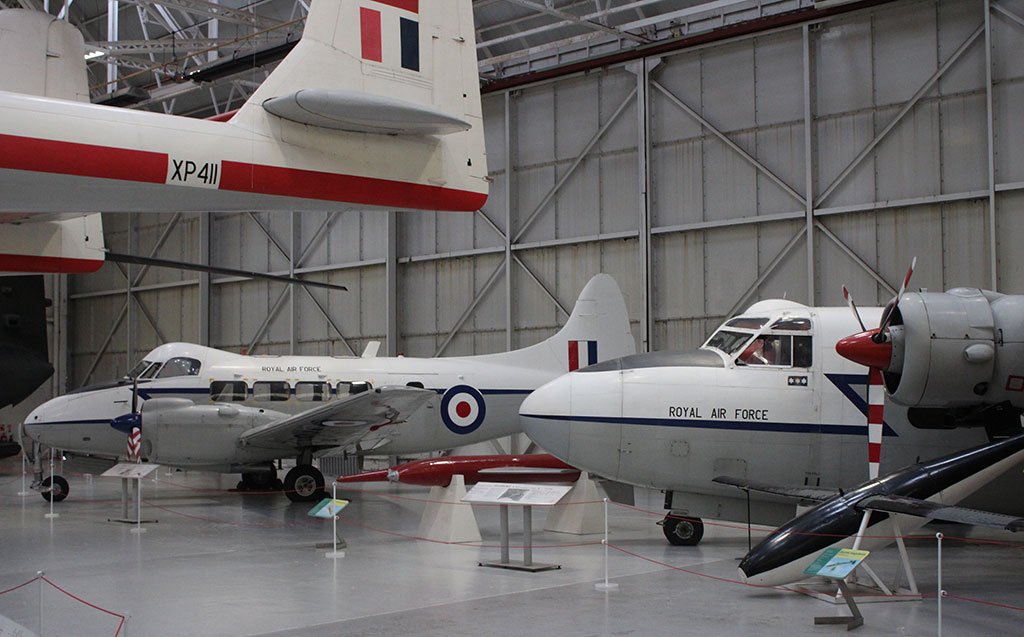
The road ahead is clear now
This may have been a short spotting trip without delivering anything out of the extraordinary, but it did allow me to snaffle up a good number of aircraft types required on this spotting journey. I can also take solace in the fact that I have finally spotted a Bandeirante after the calamity of Detroit earlier this year. One missing type spotted; the Boeing 747SP will have to wait until my next trip to North America.
My son and I are keen geologists, although he is admirably better qualified in the subject than I am. Stratigraphy is the study of rock layers and their identification by peeling back layers to establish what happened at various moments through time. It was only when I sifted through the photographs taken on this trip that I realised I too metaphorically speaking had peeled back time and had witnessed both the dawn and dusk of British jet liner evolution. The beginning of British jet liner age started with the DH Comet and ended with the Avro RJX, and I had seen both on this trip together with several important milestones in between including the Trident, Vickers VC10 and Concorde. This did feel like a considerable achievement for such a short spotting trip.
As for the long and winding road this Challenge presents, the road not yet travelled has once again lengthened due to reasons regrettably all too familiar lately. The IAI Arava on display at the IDF museum in Be’er Sheva will have to wait for calmer times to hopefully return. Regarding 2024, flights are arranged for the next overseas spotting trip in early spring, allowing me to remove the one missing type from the illustrious Fokker family of airliners. A visit to Sunderland is on the very near-term agenda too, and it doesn’t involve a visit to the Stadium of Light.
As for the school reunion in Liverpool that formed the catalyst for this short spotting trip, there is both good and bad news to report. Thankfully Mr. Jones did not lose his new wallet on our trip to the Isle of Man. What happened to that group of young teenagers who shared a single Air Band radio in the school playground all those years ago? Only Jonesy and I have remained true to our beloved hobby.
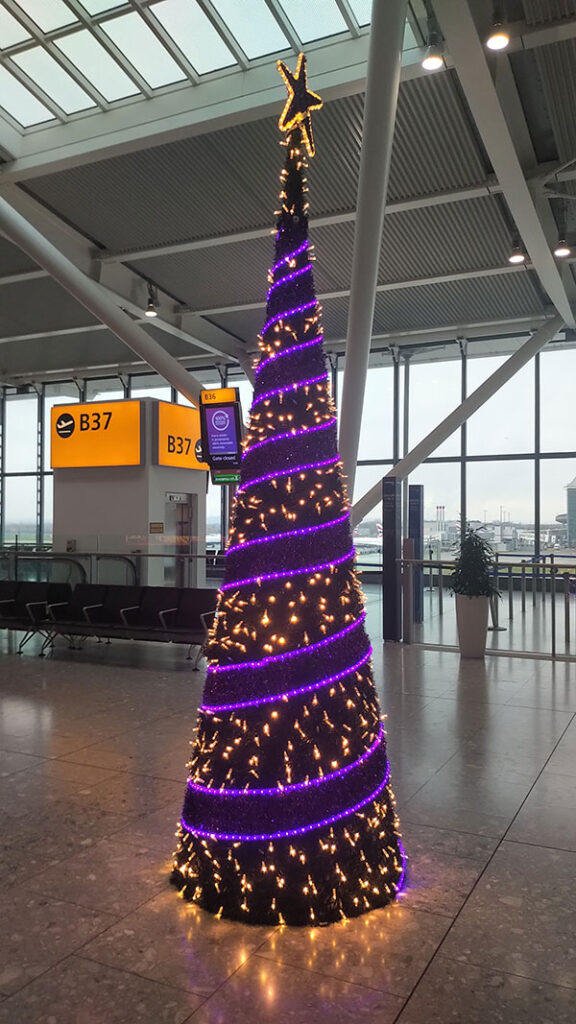
Season’s Greetings! Christmas tree at gate B37, London Heathrow

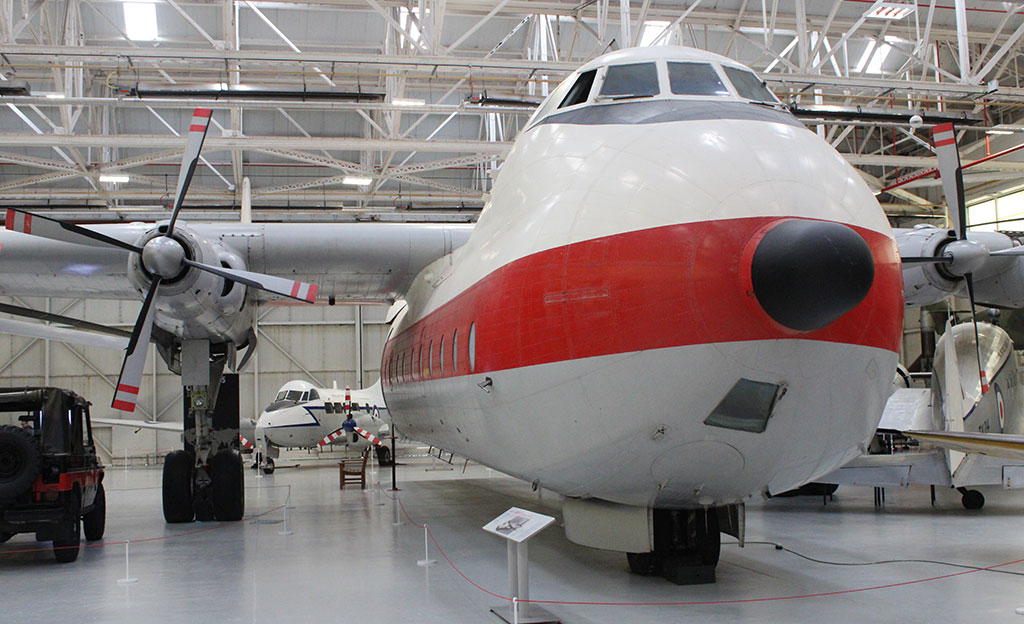



3 comments
Interesting to see the Comet 1 in your article. In 1953, at the age of 16, I rode my bike through the Hatton Cross gate at LHR (you could do that in those days if you wore overalls) and up to the Field’s Hanger (where T4 is today). There sat an RCAF Comet 1. In my usual cheeky way, I walked into the RCAF office (now dressed in my ATC uniform) saluted and asked if there was anyway I could get a ride. BOAC captains were training RCAF crews. The answer was a stern NO.
The next day I tried again, this time I rode out to the plane and asked the BOAC training Captain. To my surprise he said come onboard. This was the 2nd RCAF machine 5302 and the flight lasted 3 hrs 25 minutes at high altitude over France and Holland. When we landed the same RCAF officer who had no, came onboard and was rather surprised to see me there, but said nothing. This aircraft was rebuilt with round windows and reinforced fuselage and continued to fly with the RCAF for several years as a VIP transport. After they finished with it it sat in Florida for many years and failed to sell and was sadly scrapped.
Thank you for the Cosford photos, having a return visit next year when back in the UK.
Great to see your photos of the Argosy, Devon, Heron Prince and the mighty Belfast…all my favourites.
Seen enough Spitfires, Hurricanes Vampires and Canberras…..to last me a life time !
Good to see what the IOM has to offer, hopefully will visit there as well.
very nice story, you mr jones would his first of been brian?
with regards
steve (liverpool spotter)